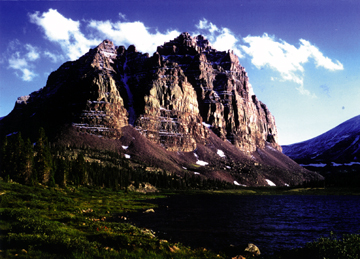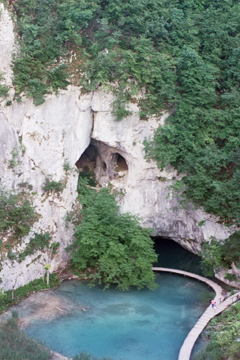Every month, we'd like to feature one of your photos from anywhere in the world and invite other readers to guess where it was taken. Look every month in the print Geotimes for a new photo. Following are clues, answers and winners from past issues.


| Do you have slides and photos you've
collected from field work or vacations? Every month, we'd like to feature one of your photos from anywhere in the world and invite other readers to guess where it was taken. Look every month in the print Geotimes for a new photo. Following are clues, answers and winners from past issues. |
 |
| Send answers for the September 2005 Where on Earth?
contest, which appears in the print magazine, to Geotimes by Sept.
28 (or postmarked by this date). From those answers, Geotimes staff
will draw the names of 10 people who will win Where on Earth? T-shirts.
And from those 10 names, we will draw the names of two people who will win
a Brunton compass.
Click here
to submit a guess for this month's Where on Earth?
contest. Submit
photos for Where on Earth? |

|
Clues: 1. This 4,000-meter-tall mountain, named for its distinctive color and turreted architectural form, is carved from Proterozoic quartzite that was buried by an ancient sea and then thrust up again. During the last ice age, the area was extensively shaped by glaciers, which left behind hundreds of lakes, including the one in the foreground that shares the name of the mountain. 2. The mountain range that surrounds this feature runs east to west more than 200 kilometers, and is a popular backpacking area. From a parking area at the end of a long, unpaved forest road, a rugged 15-kilometer trail leads up to the lake and base of the mountain. 3. Some of the best dinosaur fossil hunting opportunities in the host country are nearby.
Name the location. Scroll down for the answer |
| Answer: Check back next month for the answer to and winners of the August Where on Earth? in Geotimes. |

|
Clues: 1. The term karst came from this part of the world, which is known for its incredible Mesozoic-aged limestone and dolomite sinkholes and caves. Half of the topography of the host country is karst. 2. This park boasts cascading waterfalls up to 80 meters tall and many interconnected lakes. Through a symbiotic relationship, calcite-producing algae create dams and barriers between the lakes made of travertine, a precipitated mineral. 3.The location is a UNESCO World Heritage Site and is the host country’s
first national park, declared in the mid-20th century.
Name the park. Scroll down for the answer |
| Answer: Plitvice Lakes National Park (Plitvicka Jezera) is located in Croatia. The park is known for its travertine dams and barriers that create spectacular waterfalls and an abundance of lakes. Photo courtesy of Ksenija Namjesnik-Dejanovic. |
July
2005 Winners
Maziar Ahvari (Newport Beach, Calif.)
Antonio Arribas (Reno, Nev.)
Shannon Bell (Fredericksburg, Va.)
Scott Coles (Ashland, Wis.)
Sandy Deiber (Carol Stream, Ill.)
Alejandro Franco (The Woodlands, Texas)
Sandee C. La Boda (Kelso, Wash.)
Nancy Rorick (Sandy, Ore.)
Michael Rowe (Corvallis, Ore.)
Julie Urban (Brookfield, Wis.)
 |
Geotimes Home | AGI Home | Information Services | Geoscience Education | Public Policy | Programs | Publications | Careers |